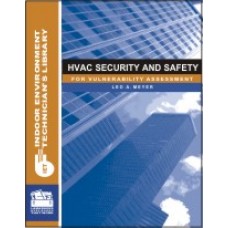MONROEVILLE, Pa. — The University of Pittsburgh Medical Center (UPMC) set out to make the new $252 million Monroeville, Pennsylvania, facility the most sustainable of its 30-hospital network. Its design team delivered a building that’s saving an estimated $350,000 to $500,000 in annual energy savings.
“Our HVAC system design exceeds ASHRAE 90.1-2004 requirements, and when combined with reduced electrical and lighting loads, it’s saving an estimated 18 percent in energy versus the standard minimum construction requirements of a standard HVAC system,” said Matthew J. Stevens, EIT, LEED AP, senior project manager, CJL Engineering, Moon Township, Pennsylvania, the project’s mechanical, electrical, and plumbing (MEP) engineering firm. Stevens and CJL’s Matthew J. Sotosky, P.E., managing partner, were members of a design team consisting of Joseph T. Badalich, corporate construction project director, UPMC; and architect Timothy Spence, AIA, LEED AP, BD+C, principal, BBH Design, Raleigh, North Carolina.
The design team’s green design for the 302,000-square-foot, 155-bed facility is Leadership in Energy and Environmental Design (LEED®) Silver certified. The facility’s sustainability measures haven’t gone unnoticed. It was recently awarded “Project of the Year” honors in the Commercial Category for 2013 from the Engineers’ Society of Western Pennsylvania, Pittsburgh. “This is certainly one of the most, if not the most, sustainable hospital designs in the Mideast region,” said Badalich, who oversaw the project’s construction for UPMC.
While some engineers rely only on major HVAC equipment to rack up LEED credits, CJL sees every green opportunity as critical to building performance, such as specifying doorways with air curtains for energy conservation. High-efficiency boilers, chillers, and rooftop DX systems were major contributors to overall energy savings; however, if the energy escapes through doorways, it diminishes the sustainability effort, according to Stevens. Therefore, CJL specified 11 air curtains for energy conservation by protecting all entrances from outdoor air infiltration.
Installed by the project’s mechanical contractor, Ruthrauff Sauer LLC, McKees Rocks, Pennsylvania, and manufactured by Berner International, New Castle, Pennsylvania, 10 of the air curtains are in-ceiling models that appear as flush ceiling grilles and supplement BBH’s aesthetic lobbies design. Furthermore, the air curtains all draw clean air from the lobby through an integral diffuser versus models that need supply duct or claim air from potentially contaminated, unconditioned air spaces above the ceiling.
Besides energy savings, the air curtains all have electric heaters that are critical for lobby indoor air comfort. The heaters are efficiently controlled with a delay that continues spot heating at a lower air velocity until the doorway area’s set point temperatures are reached.
The 11th air curtain is a conventional model mounted above the emergency room (ER) doorway that saves energy, but also prevents infiltration of any idling ER vehicle fumes, which is a common hospital IAQ problem.
All the air curtains use three-speed fans that can be adjusted for proper doorway sealing and minimal operational decibel levels. Berner International trained the building’s engineering staff to calibrate and maintain the units for peak performance and energy efficiency.
While air curtains helped contribute to sustainability, most of the seven HVAC LEED credits were attributed to a combination chilled water loop and rooftop/variable air volume (VAV) design consisting of three high-efficiency, 750-ton water-cooled chillers by Trane, Tyler, Texas; and three 9,900-Mbh boilers by Bryan Steam LLC, Peru, Indiana; and one 6,000-Mbh domestic hot water boiler by Leslie Controls, Tampa, Florida. The boilers operate ultra efficiently due to variable frequency drives (VFD).
CJL also specified three 750-ton cooling towers by Baltimore Aircoil Co., Jessup, Maryland; five custom rooftop units ranging from 68,000 to 80,000 cfm each by TMI Climate Solutions, Holly, Michigan; and pumps by Bell & Gossett, Morton Grove, Illinois.
BBH’s unitized building envelope features low U-factor glass from PPG Industries, Pittsburgh. Reducing the heat load enabled CJL to use smaller mechanical equipment, but attain the same indoor air comfort efficacy.
Because doorways are critical points for potential energy savings, Stevens said CJL’s future hospital projects will all consider air curtains combined with vestibules to increase energy-saving potential at entrances and enhance the entire sustainability design.
For more information, visit www.berner.com.
Publication date: 6/23/2014
Want more HVAC industry news and information? Join The NEWS on Facebook, Twitter, and LinkedIn today!






